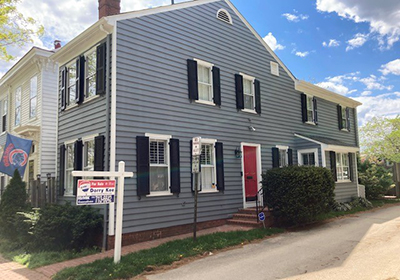
First American: House Prices in All 50 Top Markets More Affordable Than Boom Peaks

First American Financial Corp., Santa Ana, Calif., said while house prices have increased, house-buying power has also increased because of a long-run decline in mortgage rates and the slow, but steady growth of household income.
The company’s monthly Real House Price Index reported “real” house prices increased by 0.2 percent between June and July and by 16 percent year over year. But although consumer house-buying power—how much one can buy based on changes in income and interest rates—fell between June and July (1.63 percent), it increased by nearly 4 percent year over year.
The report said median household income has increased 1.9 percent since July 2020 and by 64.9 percent since January 2000. Thus, said First American Chief Economist Mark Fleming, real house prices are 11.4 percent less expensive than in January 2000. While unadjusted house prices are now 34.9 percent above the housing boom peak in 2006, real, house-buying power-adjusted house prices remain 37.8 percent below their 2006 housing boom peak.

Fleming noted housing affordability continued its decline as year-over-year nominal house price appreciation reached a record 20 percent, vastly outpacing the increase in house-buying power compared with a year ago, house-buying power-adjusted house prices remain nearly 38 percent below their 2006 housing boom peak.
“House-buying power matters because people typically buy homes based on how much it costs each month to make a mortgage payment, not the price of the home,” Fleming said. “Mortgage rates are generally the same across the country, so the long-run decline in mortgage rates boosts affordability equally in each market. Household income growth and nominal house prices, on the other hand, differ from market to market, so affordability varies geographically as well. Based on the house-buying power-adjusted RHPI, we find that affordability is higher in all 50 markets compared to their previous respective RHPI peaks.”
For example, Fleming said, home in Chicago are 56 percent more affordable today than in July 2006, when mortgage rates were 6.7 percent; rates are now 2.9 percent. “The decline in mortgage rates and steady rise in household income resulted in a 135 percent increase in house-buying power, which was more than enough to offset the 2.6 percent increase in nominal house price growth,” he said.
Fleming added while nominal house prices continue to break records, affordability remains vastly improved in most markets relative to their previous peaks. “The pace of house price appreciation is widely expected to cool, but still increase in the months ahead,” he said. “If prices continue to outpace house-buying power, affordability will suffer, but we’re still a long way from 2006.”
The report said states with the greatest year-over-year increase in the index were Arizona (+24.8 percent), Vermont (+21.8 percent), Nevada (+20.2 percent), Connecticut (+19.6 percent), and Georgia (+18.1 percent). No states showed a year-over-year decrease.
Among metros tracked by First American, markets with the greatest year-over-year increase were Phoenix (+28.3 percent), Las Vegas (+21.7 percent), Tampa, Fla. (+21.4 percent), Jacksonville, Fla. (+21.4 percent), and Kansas City, Mo. (+21.1 percent). No markets showed a year-over-year decrease.
